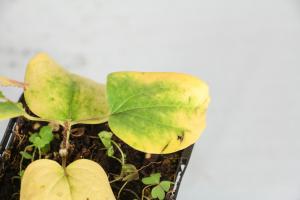How to Ship Potted Plants with USPS
Shipping potted plants can be a tricky task, especially when it comes to choosing the right carrier service. USPS, also known as the United States Postal Service, is one of the best options for shipping plants, particularly when shipping domestically. Here are some tips on how to ship potted plants with USPS:
1. Choose the Right Packaging Material
The first step is to carefully choose the right packaging material for your potted plants. You should use sturdy boxes with padding inside, such as foam or bubble wrap, to protect the plant during transit. Additionally, choose boxes that are slightly larger than your plant to accommodate the padding and avoid damage.
2. Use Appropriate Soil and Wrapping Material
Use appropriate soil and wrapping material to protect the plant during transit. It is recommended to use a high-quality soil mix that is slightly damp to maintain plant hydration. Additionally, use plastic wrap or a plastic bag around the pot to keep the soil from spilling during transit. Use newspaper or other cushioning materials to fill any gaps between the plant and the box for extra protection.
3. Choose the Right USPS Service
Select the right USPS service based on the size and weight of your plant. The options include First-Class Mail, Priority Mail, and Priority Mail Express. First-Class Mail is the cheapest option but has restrictions on weight and size. Priority Mail is faster and has more flexible size and weight options. Priority Mail Express is the fastest and most expensive option but offers guaranteed overnight delivery.
4. Label the Package Correctly
Label the package correctly with the recipient's address and your return address. Make sure to label the package as "live plants" to ensure that the package is handled properly during shipping. If possible, include "fragile" or "handle with care" stickers on the package for an extra layer of caution.
5. Time the Shipping Correctly
Time your shipping correctly to ensure that your plant arrives at the destination as healthy as possible. Avoid shipping during extreme weather conditions, such as hot summers and cold winters. Check the delivery time for the selected USPS service and plan accordingly to avoid delays.
6. Choose a Reputable Seller
Choose a reputable seller when purchasing plants for shipping. Look for a seller with positive reviews and experience in shipping plants. Additionally, consider purchasing plants that are more suitable for shipping, such as small or sturdy plants, to avoid damage during transit.
Shipping potted plants can be challenging, but with the right preparation and packaging, USPS can provide a reliable and cost-effective shipping solution. Follow these tips to ship your potted plants with USPS successfully.

 how many times do yo...
how many times do yo... how many planted tre...
how many planted tre... how many pine trees ...
how many pine trees ... how many pecan trees...
how many pecan trees... how many plants comp...
how many plants comp... how many plants can ...
how many plants can ... how many plants and ...
how many plants and ... how many pepper plan...
how many pepper plan...





























